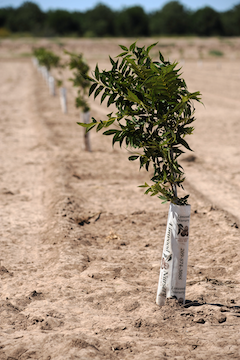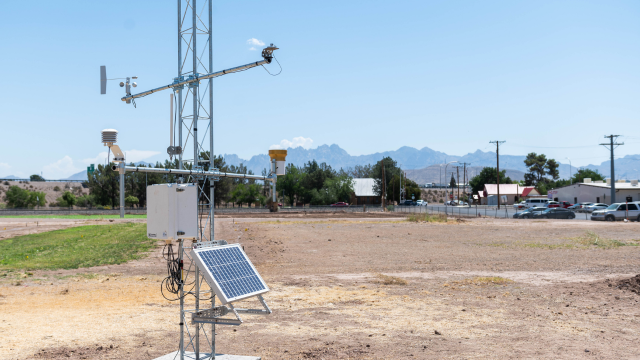For more details about an impact, contact information for NMSU ACES faculty and staff is available at the online directory.
For general questions regarding impacts in this database, please contact Claire Montoya at ccortner@nmsu.edu.
Water Use and Conservation
Water is the most limiting resource for New Mexico. All aspects of water use affect agricultural efficiency, profitability, and human health. Water management will become more critical as water demands for urbanization and industrialization increase.
Displaying 4 impacts with tag Water Use and Conservation.

Pecans are a large contributor to New Mexico’s agricultural economy with production exceeding $130 million annually.
More...

Effective water management is a critical challenge faced by turfgrass managers in arid regions worldwide and periodically in temperate zones. Governments have responded to reduced water supplies by implementing policies that restrict potable water use for non-essential purposes. Despite ongoing efforts to reduce water consumption and showcase water conservation in turfgrass management, additional water restrictions will persist, limiting turfgrass water use.
More...
(No image)
The decrease in annual and crop growing season precipitation and the increase in temperatures might be translated into the increase in crop evapotranspiration demand versus reducing available water resources. Long-term average annual precipitation in the Four Corners regions is about 8” while crop water use is about 32” corn and 44” for alfalfa, 26” for potato. Small crop producers in the region are 100% relying on the streamflow of the San Juan, Animas, and LaPlata rivers and the commercial growers such as the Navajo Agricultural Products Industry and contractors use water diversion from the Navajo Lake with other functions. Limited available water resources under a decreasing trend of precipitation under changing climate, there is a call for more efficient and precise use of water in irrigated agriculture in the Four corners region.
More...

The weather station in Mora provided critical information on the low dew point temperatures, telling them about the extremely dry air and likelihood of extreme wildfire behavior in the Mora Valley.
More...